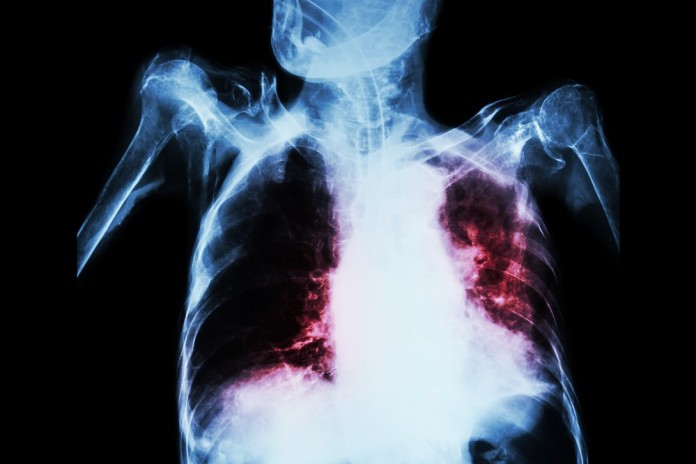Abstract:
Tuberculosis (TB) is an ancient and deadly bacterial disease that generally affects the lungs. Despite the fact that TB is both preventable and curable, many people in low- and middle-income countries still die each year from the disease. Inappropriate treatment has resulted in strains of drug-resistant TB which, while treatable in many instances, is incredibly difficult to do so. A drug-resistant TB specific treatment program, DOTS Plus, has been developed to address the many challenges facing treating MDR-TB in low- and middle-income countries. The DOTS Plus program produces reasonable results, but does not address all the operational challenges in treating the disease.
Main Article:
Tuberculosis is an ancient scourge that humanity has been fighting for centuries1. Tuberculosis (TB), caused by the bacteria Mycobacterium tuberculosis, is the second-leading cause of death from infectious disease and is especially lethal for those co-infected with HIV2. Over 95% of the TB deaths occur in low- and middle-income countries2. In 2014 an estimated 1.5 million adults and 140,000 children died of TB2.
TB has been around for a very long time and effective drugs to cure the disease have been used for decades. However, many challenges exist in treating TB, such as inappropriate or incorrect use of the drugs or the use of poor quality medicine. These challenges result in TB infected folks, sometimes through no fault of their own, not completing their full course of treatment, which lasts at least 6 months. By not completing the full course of treatment, TB infected patients end up with bacteria that builds resistance to the medication they were taking while the susceptible bacteria were successfully eradicated by the incomplete treatment. The form of TB resistant to at least 2 of the most powerful first-line (standard) drugs, isoniazid and rifampicin, is called MDR-TB (multi-drug resistant TB). Once MDR-TB exists in a community, it can be spread from person to person just like regular TB, meaning that not everyone with MDR-TB started but didn’t finish treatment. The upside is that there are second-line drugs that can cure MDR-TB. The downside is that the course of treatment to cure MDR-TB is even longer than regular TB (2 years compared to 6 months) and the second-line drugs are very expensive. This means that many of the poorest countries with a high burden of MDR-TB may not have affordable and regular access to the second-line. According to the WHO, about 480,000 people developed MDR-TB in 20142. More than half of the cases were in India, People’s Republic of China, and the Russian Federation.
By not completing the full course of treatment, TB infected patients end up with bacteria that builds resistance
In some cases, more severe drug resistance can develop, called ‘extensively drug resistant TB’ (XDR-TB). XDR-TB responds to even fewer drugs, including the most effective second-line drugs. However, all is not lost as some cases of XDR-TB can be successfully cured depending on the extent of the drug resistance, the severity of disease, whether or not the patient’s immune system is weakened and treatment adherence.
The widely accepted form of treatment for TB is called DOTS (directly observed treatment, short-course) which uses the standard, first-line drugs. This strategy involves health personnel watching a TB-infected person take their TB drugs every day for the duration of treatment. However, the use of DOTS in people with MDR-TB results in poor outcomes due to the fact that patients with MDR-TB are resistant to first-line drugs so treating them with those drugs will be ineffective.
To address the specific challenges facing MDR-TB, the DOTS Plus program was created and was endorsed by the World Health Organization in 2000. The DOTS Plus program focuses on managing access to second-line drugs in resource-limited settings to ensure that MDR-TB patients are treated appropriately. However, it remains to be seen if the DOTS Plus program is effective in the various settings where MDR-TB is found. In 2002, India initiated the DOTS Plus strategy nationwide and a seven-year pilot experience demonstrated that 61% of the patients were cured, while 18% defaulted on treatment7.Significant constraints were identified in effectively administering the DOTS Plus program, including:
- The long delay in diagnosing MDR-TB (about 6 months) meaning that some patients die before treatment can begin;
- An additional delay in starting treatment once a diagnosis is made (about 3 months);
- The intensity of treatment (daily supervised treatment over 2 years, with daily injection treatment for 6 months);
- The ability to manage side effects, which range from moderate to severe; and
- The ability to manage the program when the patients migrate to another geographical area.7
The DOTS Plus program may very well be the answer to drug resistant TB, but will require additional support for timely diagnoses, medication availability and care coordination.
References:
- Daniel, T.M. 2006. The history of tuberculosis. Respiratory Medicine, 100(11): 1862-1870. doi:10.1016/j.rmed.2006.08.006
- World Health Organization. October 2015. Media Center, Tuberculosis. Accessed January 28, 2016. http://www.who.int/mediacentre/factsheets/fs104/en/
- Centers for Disease Control and Prevention. January 2013. Tuberculosis, Fact Sheet. Accessed January 28, 2016. http://www.cdc.gov/tb/publications/factsheets/drtb/xdrtb.htm
- Sterling, T.R., Lehmann, H.P., & Frieden, T.R. 2003. Impact of DOTS compared with DOTS-plus on multidrug resistant tuberculosis and tuberculosis deaths: decision analysis. BMJ, 326:524.
- Grover, G.S. & Takkar, J. 2008. Recent Advances in Multi-Drug Resistant Tuberculosis and RNTCP. Indian J Community Med. 33(4): 219-223.
- STOP TB Working Group on DOTS-Plus for MDR-TB. Strategic Plan 2006-2015. Accessed January 28, 2016. http://www.stoptb.org/assets/documents/global/plan/Stop%20TB%20Working%20Group%20on%20DOTS%20Final.pdf
- Singla, R., Sarin, R., Khalid, U.K., Mathuria, K., Singla, N., Jaiswal, A., Puri, M.M., Visalakshi, P., Behera, D. 2009. Seven-year DOTS-Plus pilot experience in India: results, constraints and issues. Int J Tuberc Lung Dis. 13(8): 976-981.
Read More:
Theresa Majeski: Making A Difference, One Article at a Time https://infectioncontrol.tips/2016/01/22/theresa-majeski-making-a-difference-one-article-at-a-time/












